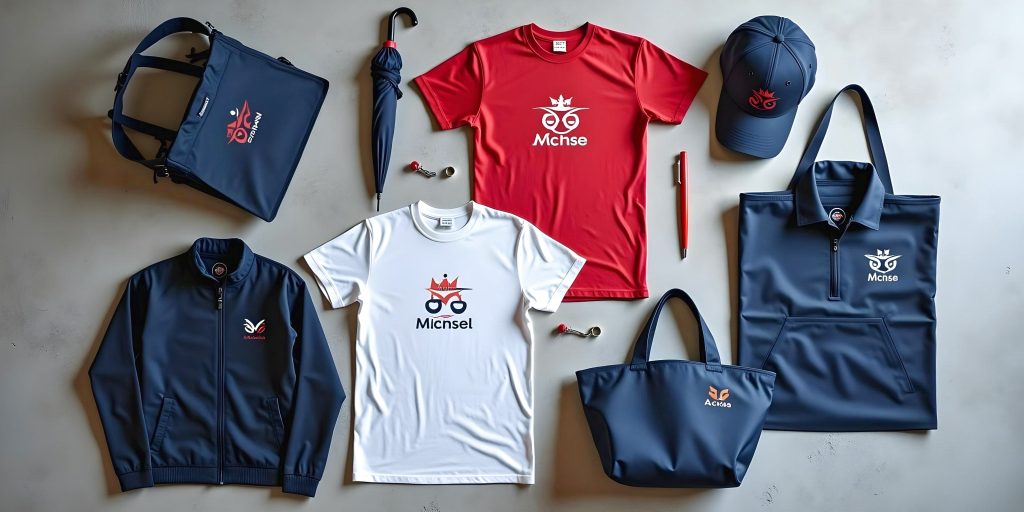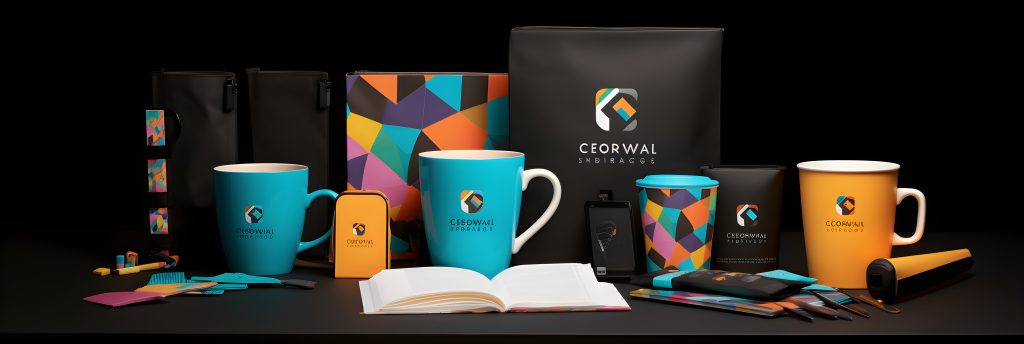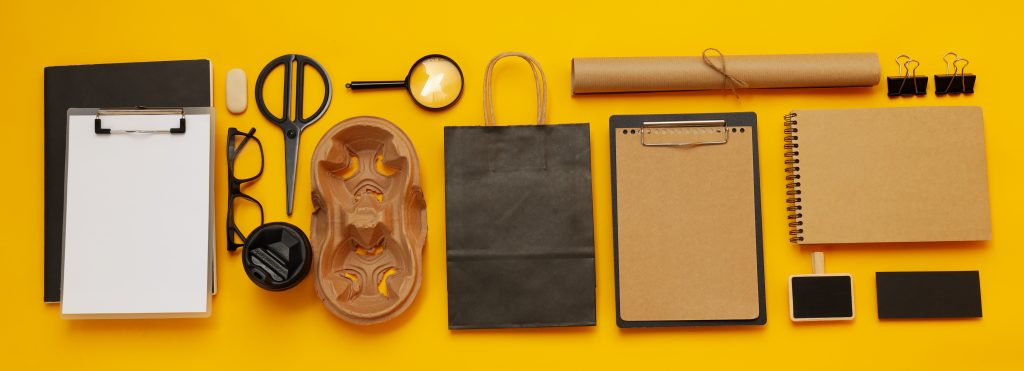When it comes to promoting your business, well-chosen branded merchandise can have a big impact. In fact, according to recent industry statistics, 85% of consumers recall the brand name on the promotional products they receive (gitnux.org). That alone shows the potential power of giving out branded swag at events, trade shows, or even as client gifts. However, many companies still stumble into common pitfalls that reduce the effectiveness and ROI of their promotional efforts. To help you navigate this process smoothly and get the most out of your investment, we’ll discuss 7 Rookie Mistakes to Avoid When Ordering Branded Swag so you can steer clear of costly errors.
Branded merchandise not only increases brand recall but also drives positive engagement. Studies show that 83% of consumers are more likely to do business with a brand after receiving a promotional product, and more than half use the promo items at least once a week (promotionalproducts.com). Yet despite these benefits, simple oversights in planning, budgeting, or design can undermine the entire campaign. Let’s take a closer look at how to avoid these mistakes so you can ensure your swag stands out in the right way.
Why It Matters
Before diving into the specific pitfalls, it’s important to understand why 7 Rookie Mistakes to Avoid When Ordering Branded Swag is a crucial topic. Many businesses assume that just adding a logo to a bulk order of items is guaranteed to leave a good impression. However, your potential clients are bombarded with promotional items every day. If your branded swag doesn’t align with audience interests, reflect your brand values, and meet quality standards, it risks being tossed aside or forgotten.

By learning about these 7 Rookie Mistakes to Avoid When Ordering Branded Swag, you’ll be much better prepared to invest in items that stay in people’s hands and remind them of your company for a long time. Promotional Products Association International (PPAI) highlights this idea by noting that effective swag integrates creativity, audience insight, and a strong brand message. Keep in mind that quality matters, too—after all, 79% of people keep promotional products for at least one year. That’s a lot of time to reinforce brand awareness.
Common Trends and Tools
- Sustainable Promotional Products: Eco-friendly items are on the rise, reflecting a broader “going green” movement.
- Tech Gadgets as Swag: USB drives, power banks, or wireless chargers resonate with a digital audience.
- Personalization and Customization: Adding recipient names or unique designs can boost perceived value.
- Integration with Digital Marketing: Tricks like QR codes on items can lead to online engagement and better tracking.
Resources like SAGE and ESP (Electronic Supplier Network) provide research and product management tools for the promotional industry. Meanwhile, user-friendly design platforms such as Canva empower smaller businesses to create appealing artwork for their branded items without hiring a designer. Let’s explore how to keep your promotional game strong by avoiding the slip-ups outlined below.
When ordering branded merchandise, early planning and solid strategy often separate stellar outcomes from wasted budgets. Below, we break down each of the first three rookie mistakes so you can avoid them from the start.
1: Failing to Define Clear Goals
One of the biggest 7 Rookie Mistakes to Avoid When Ordering Branded Swag is jumping into production without knowing why you’re creating the items. Do you aim to boost brand awareness, reward employees, or drive foot traffic to an expo booth? Defining these goals helps you select products that resonate with your audience. It also clarifies metrics for evaluating success. For instance, if your primary purpose is lead generation, you might prefer a small yet memorable tote bag or notebook that prospects carry around, reinforcing your message every time they see your logo.
If your main objective is building stronger relationships with existing clients, you may opt for higher-end products like stainless-steel drinkware or tech accessories. Be sure to consult with suppliers such as 4imprint or Staples Promotional Products to explore a wide range of items suited to your needs.
2: Ignoring Your Audience’s Preferences
You might love the idea of branded T-shirts, but does your audience share that enthusiasm? Neglecting to research the preferences of your recipients can lead to items collecting dust in a drawer. Whether you’re marketing to fellow professionals, families, or outdoor enthusiasts, always think about the practical value of the product. For example, if your audience travels frequently for work, a set of branded luggage tags or compact chargers might be much more appealing than a standard pen.
When you understand your target audience’s habits, you can select relevant products that get frequent use and act as a constant brand reminder. According to worldmetrics.org, promotional bags alone can generate an average of 5,700 impressions over their lifetime. That highlights how enormous the impact can be for items that align with audience needs.
3: Low-Quality Designs and Materials
Another 7 Rookie Mistakes to Avoid When Ordering Branded Swag issue is opting for the cheapest materials or rushing through the design. The result can be chipped logos, flimsy items, or unreadable graphics that negatively reflect on your brand. Since promotional products often stay with recipients for a long time, quality matters. Don’t let subpar printing or poor design overshadow your brand message.
To ensure a polished look, consider working with established providers like BIC Graphic known for high-quality printing, or partner with a marketing solutions provider like Proforma that can handle both design and production. A well-made product also offers a better return on investment (ROI) because it stays in circulation longer, generating more impressions.

4: Underestimating Lead Times and Production Schedules
Although “fast” is ideal, waiting until the last minute to place orders is one of the 7 Rookie Mistakes to Avoid When Ordering Branded Swag. Quality suppliers book up quickly, and large-scale printing or embroidery processes need sufficient time. If you miss the supplier’s window, your items may arrive after a key event or risk being rushed with potential errors.
Always build in extra weeks for proof approval, revisions, and possible shipping delays. This strategy helps you catch any issues, such as color mismatches or off-center printing. Whether you’re working with HALO Branded Solutions or Geiger, ask for clear lead times so you can plan around them. It’s better to have your merchandise ready a bit earlier than to face the disappointment of missing your launch date or event.
5: Failing to Budget for Additional Costs
Another common pitfall involves underestimating the total cost of implementing a promotional campaign. Setup fees, shipping costs, and custom design charges can catch you off guard if you haven’t done your homework. Some businesses also forget that distributing the swag—especially if you’re mailing items to clients—can quickly add up.
To avoid overspending, request a detailed quote from your supplier. Include potential extras such as rush fees, sample costs, and packaging. If you intend to ship items to multiple locations, plan for postage or courier fees in your budget. Tools like PromoSuite can help track expenses and manage timelines, ensuring you don’t get stuck with hidden costs later.
6: Overlooking Sustainable and Ethical Options
With growing environmental awareness, skipping mindful production practices can alienate potential customers. Sustainable promotional products are a rising trend, and failing to adopt eco-friendly materials is included among 7 Rookie Mistakes to Avoid When Ordering Branded Swag. Instead of defaulting to plastic giveaways, explore reusable and planet-friendly items like bamboo utensils, recycled tote bags, or biodegradable pens. This approach not only helps the environment but also portrays your brand as modern and conscious.
Organizations like the Advertising Specialty Institute (ASI) and PPAI make it easier for businesses to find ethical suppliers and sustainable product lines. By prioritizing green options, you show your audience that you care about broader societal values—an added credibility booster.
7: Not Measuring ROI or Tracking Effectiveness
The final 7 Rookie Mistakes to Avoid When Ordering Branded Swag “rookie error” is treating merchandise distribution as a standalone activity. If you don’t measure the outcomes, how will you know if your investment was worth it? Keep track of who receives your promotional items and how they respond. You can use digital ties—like QR codes leading to your landing page—or collect feedback directly from recipients.

By measuring how many leads or sales come from an event, you can refine future orders. For instance, if you find that half the recipients of your branded USB drives visit your website, that’s a positive sign. If your branded T-shirts end up in the back of a closet, though, it might be time to explore other options. Tools like Zazzle and Custom Ink offer smaller batch runs that let you test new designs or categories before you commit to a large order.
Conclusion
Understanding these 7 Rookie Mistakes to Avoid When Ordering Branded Swag gives you a solid foundation to create more targeted, cost-effective, and memorable promotional campaigns. As industry data shows, promotional products can increase brand awareness by as much as 96% and leave a lasting impression for up to two years (steel-city.co.uk, worldmetrics.org). By defining clear goals, knowing your audience, maintaining quality, and staying on top of deadlines and budgets, you’re well on your way to leveraging branded merchandise that truly resonates.
The Merch Manual’s mission is to be your go-to resource for insights, trends, and strategies in each stage of your promotional journey. From discovering new eco-friendly options to ensuring on-time, on-budget deliveries, we’re here to make certain you avoid 7 Rookie Mistakes to Avoid When Ordering Branded Swag. With the right approach, your promotional products can build lasting relationships, encourage higher brand recall, and keep you front and center in the minds of your target audience. And that, in the end, amplifies your brand’s impact far beyond a single event or campaign.
